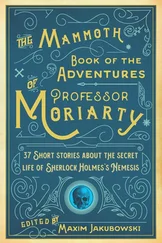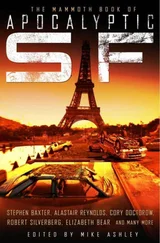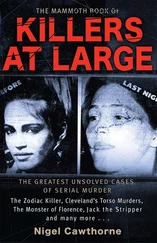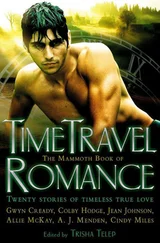“Mommy?”
Tess’s entire body jolts. The eyes and skin might be wrong, but the voice and smile are all Emily, yet when Tess holds out her arms, Emily steps back, not closer, and lifts her chin. Moonlight reflects in the black of her eyes, and an image comes in view: a still-swollen abdomen, pendulous breasts, vulva concealed by a thick thatch of curls, long tentacular limbs, eel-like fingers ending in claws, a dark eye emerging from tendrils of coiling hair.
Tess backs away, her hands held palm out; Emily stands, face impassive. Her lips don’t move, but a deep, mellifluous voice says, “I see you, first mother of my firstborn.”
Tess bites back a sob. “What, who, are you?”
“I am the mother of all, she who birthed the world and made it whole. I am all that was, and all that will be.”
Emily takes her hand, and Tess hisses in a breath — Emily’s skin is cold, so cold — and once again, the world melts away. Tess sees the shape, the mother, sitting atop a throne. Another being emerges from beneath the ocean floor and wrenches the mother from her place. Sand obscures a great battle, then settles to reveal black blood and lifeless limbs, and the mother, battered and bruised, crawling back to her throne. A second beast rears, rends; the mother’s mouth opens in a silent scream; battle begins anew. More blood and sand and fury; endless creatures, endless battles.
Tess covers her eyes. No more. She can’t bear this. Emily squeezes her hand; she reopens her eyes. Sees Emily walking on the beach and into the waves, into the mother’s embrace; sees inhuman hands guiding her between two great thighs, pushing her into a cavernous womb; sees Emily floating, sleeping with her hands clasped together beneath her cheek; sees small creatures crawling from her navel to drift and grow beside her in the amniotic fluid.
Emily withdraws her hand. “Now you see,” the voice, not Emily’s, says. “The usurper gods are finally dead, and it is time for my children to put the world right. The birthing is over, but your work is not done. You must open the door.”
“But why me? Why my daughter?”
“Because you are her first mother and she alone had the strength to answer my call.”
Tess swallows hard, pushes defiance in her words. “And what will happen if I don’t?”
There is a silence, a profound absence of everything, and stars glitter in the sky. Tess’s fingers tremble; in the black pits of Emily’s eyes, the mother quivers.
A peal of inhuman laughter slices through the quiet. “Then I will take my children back into my womb, and I will unmake the world.”
In Emily’s eyes, a face begins to rise to the surface, and every instinct tells Tess to avert her eyes, to run, then the face slips into the depths again. More laughter.
Emily steps forward and touches Tess’s cheek. “Everything will be okay.” She takes Tess’s hand and places it on her belly.
Sobbing, Tess curls her hand around the umbilicus. Its pulsing warmth is unexpected, and she fights the urge to pull away. It changes, softens, wraps around her fingers. The narrow strands dance across her skin, and in the center of it all, Tess’s fingertips meet a hardness. Emily’s gaze, with its strange, black un-Emily eyes, locks on hers.
Panic courses through her veins. What is she going to set in motion? What if this is the end of everything?
“I love you, Mommy. I’ve missed you so much.”
Tess sobs harder; the panic shatters. “I love you, too, punkin, with all my heart. I’ve missed you every single day.”
Emily smiles. “But now I’m back and everything will be okay, I promise.”
Tess sucks in a breath and turns the key. The umbilicus shrivels, turns the shade of an oyster shell, and falls to the sand. The weighted silence returns, hangs, and then the creak of a great doorway opening. From the water emerges a thousand, no, a hundred thousand Emilys, all black eyes and pale skin, but there is something inhuman in their faces, something painful to look upon, as though their Emily skin is nothing more than mimicry and a closer inspection will reveal the truth and send her screaming into madness.
They move with odd, liquid strides and when they pass, each pauses to pat Emily’s shoulder and whisper, “Sister.” Tess catches sight of jagged teeth, too many teeth, and where navels should be, they have a circular patch of translucent skin that reveals not organs, but a darkness hiding in a shifting sea. As they leave the beach, disappearing into the shadows, Tess whimpers. What are they going to do? What has she unleashed?
And how can such wrongs set anything right?
“Don’t worry,” Emily says. “They won’t hurt you.” She blinks and familiar green eyes replace the black, wraps her arms around Tess and the cold is gone, too.
Tears turn Tess’s vision to a blur, and she can’t speak, can only hold Emily tight, breathing her in, terrified to look too close, to see beneath the camouflage. But she has her daughter back, and that’s worth everything and anything at all. No matter what, it has to be.
Some years back, Veronica Schanoeswas having a drink with Nick Mamatas and John Langan. “They were waxing eloquent about H. P. Lovecraft,” she explains. “Though I can’t deny that Lovecraft has influenced my work, I couldn’t relate to the exalted place he seemed to occupy, and I wondered if the difference could be ascribed to gender. More to the point, I made a sweeping generalization rather off-handedly: ‘Lovecraft does nothing for me,’ I said. ‘That wasn’t the horror the girls were passing around in fifth grade. V. C. Andrews is to girls what Lovecraft is to boys.’
“Of course, I was wrong — plenty of women have found Lovecraft very important indeed — but I don’t think I was entirely wrong. Lovecraft is the cosmic gothic (how insignificant and futile a thing is man!); Andrews is the domestic gothic (the call is coming from inside the house !), and of course the resonance of those categories is highly gendered. So what I have done in my piece is to try to take Lovecraftian themes (monstrous generation, inherited guilt, the horror of the Other) and reconfigure them as domestic gothic, using Lovecraft’s own life and predilections. These themes are of course treated by Andrews in the domestic gothic — the monstrosity of one’s origin (incest), how one bears the guilt for the sins of one’s forbears, and the horror of the Other when the Other is uncomfortably close to being oneself. In this piece, I wonder about Lovecraft’s own monstrous generation; about the racist horrors that founded the United States and what they mean to someone who saw himself as an avatar of eighteenth-century America; the horror of the Other that took the form of Lovecraft’s anti-Semitism, and what that means to me, as a twenty-first-century Jew in New York City.
“In my book, true horror is already inside the house.”
Schanoes is a writer and scholar living in New York City. Her fiction has most recently appeared on Tor.com and in The Doll Collection, edited by Ellen Datlow, and Queen Victoria’s Book of Spells , edited by Ellen Datlow and Terri Windling. She is an Associate Professor in the Department of English at Queens College-CUNY, and her first book, a monograph about feminist revisions of fairy tales called Fairy Tales, Myth, and Psychoanalytic Theory: Feminism and Retelling the Tale appeared from Ashgate Publishing in 2014.
Variations on Lovecraftian Themes
By 1898, Winfield Scott Lovecraft had been in the Butler hospital in Providence, Rhode Island, for five years, ever since a delusional breakdown occurring in Chicago during April 1893. His delusions were paranoid in nature, and included the persistent beliefs that men — notably black men — were violating his wife, that his food was being poisoned, and that his belongings were being stolen by hospital attendants, who were understood to be his enemies. (Given the treatment those with persistent mental illness receive all too often in such facilities even today, this last may not have been so far-fetched.)
Читать дальше












